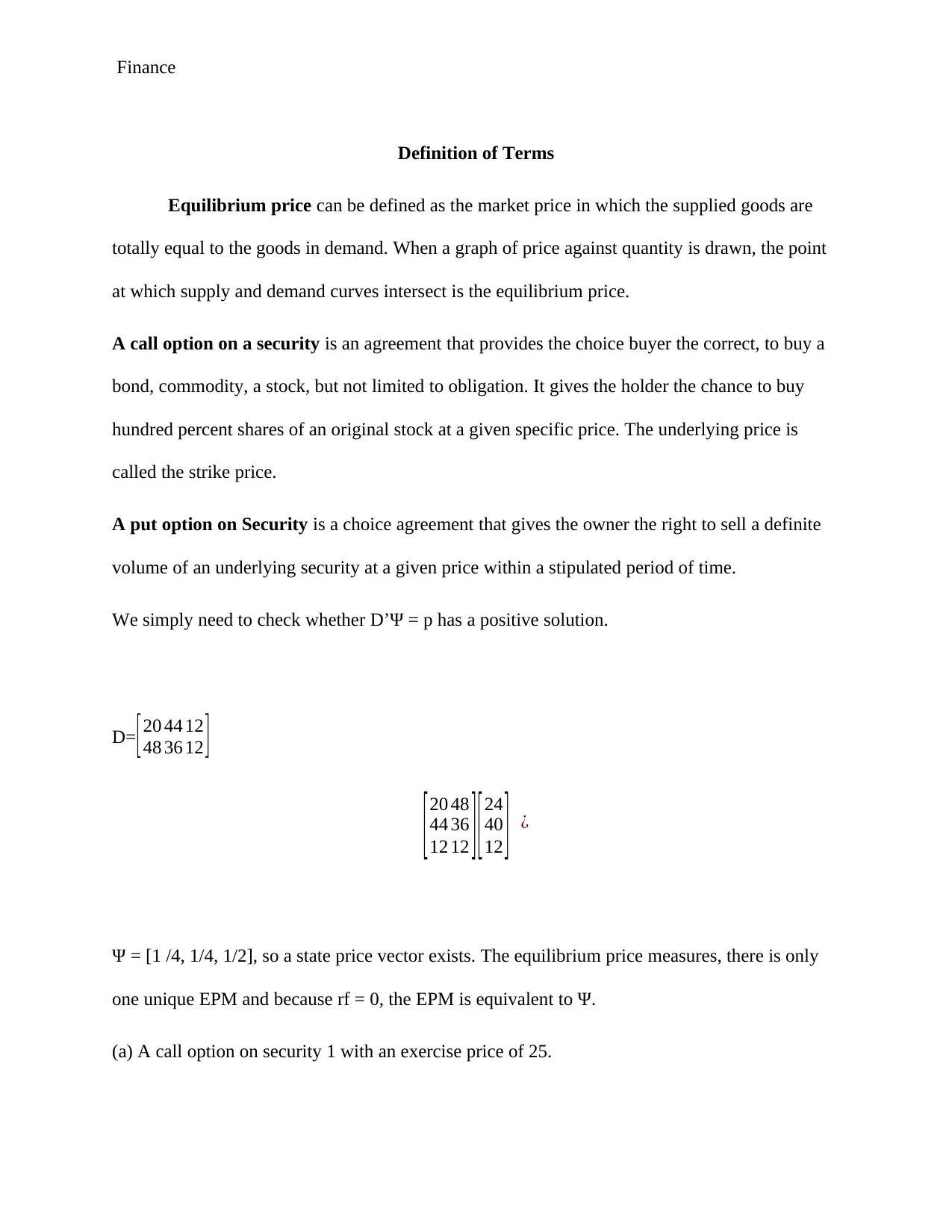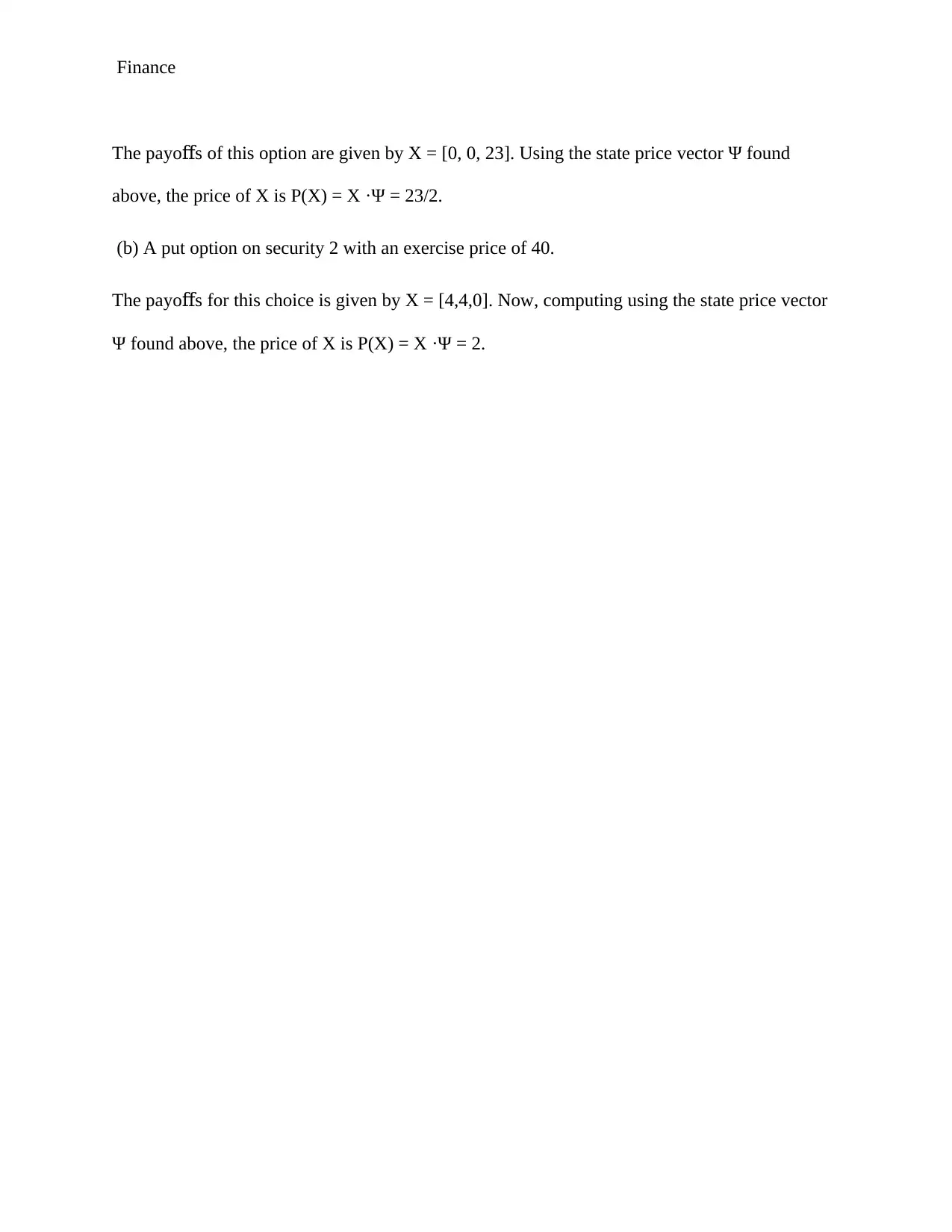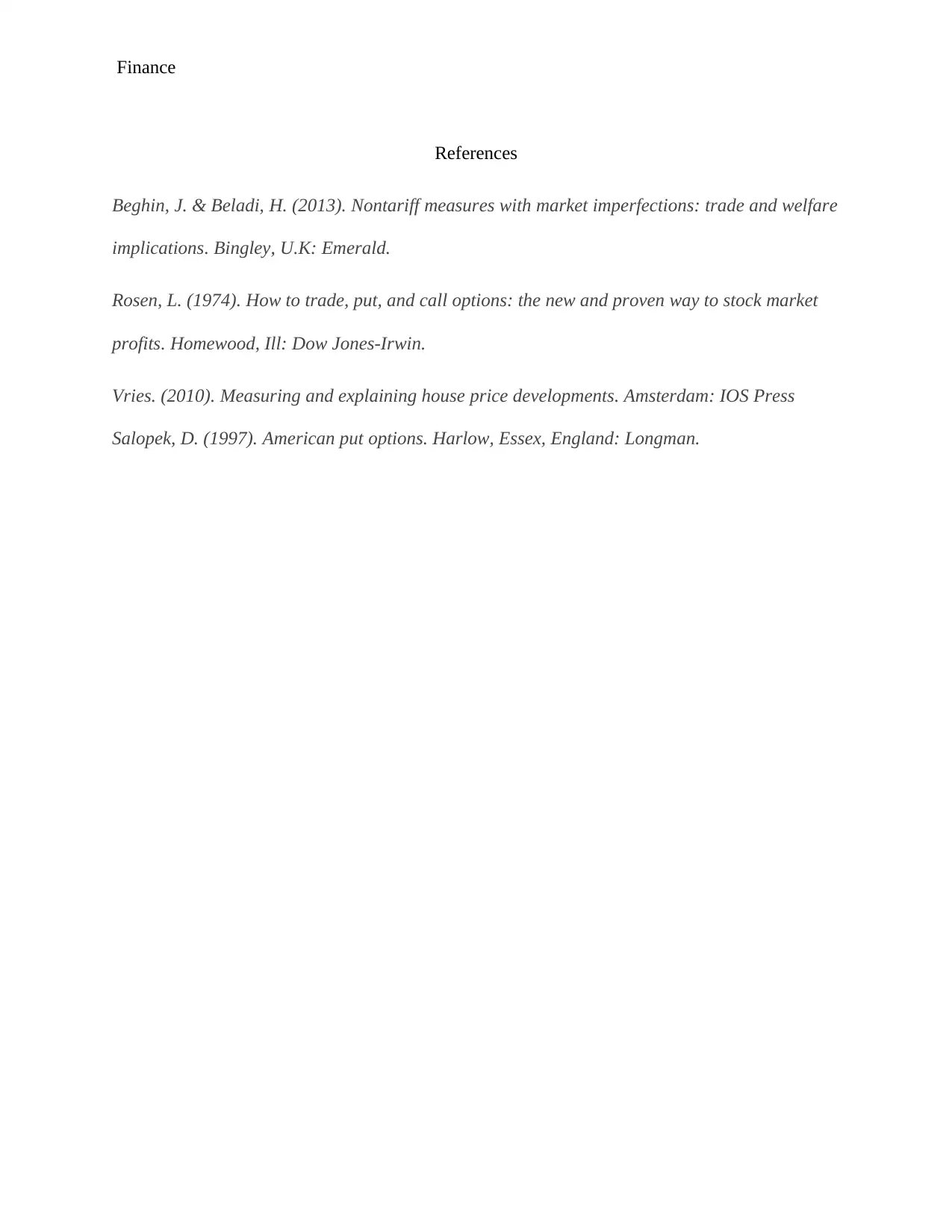Finance Assignment Solution: Equilibrium, Options, and Pricing
VerifiedAdded on 2023/04/23
|5
|461
|246
Homework Assignment
AI Summary
This finance assignment solution addresses key concepts in financial markets, including equilibrium prices and option pricing. The solution begins by defining terms like equilibrium price, call options, and put options, providing clear explanations of each. It then delves into a specific problem involving a state price vector, calculating the price of a call option and a put option using the given parameters. The solution demonstrates the application of financial models and formulas to real-world scenarios. The assignment also includes references to relevant financial literature, providing additional context and resources for further study. This document is a valuable resource for students studying finance, offering a practical understanding of core concepts and their application in financial analysis.
1 out of 5











![[object Object]](/_next/static/media/star-bottom.7253800d.svg)